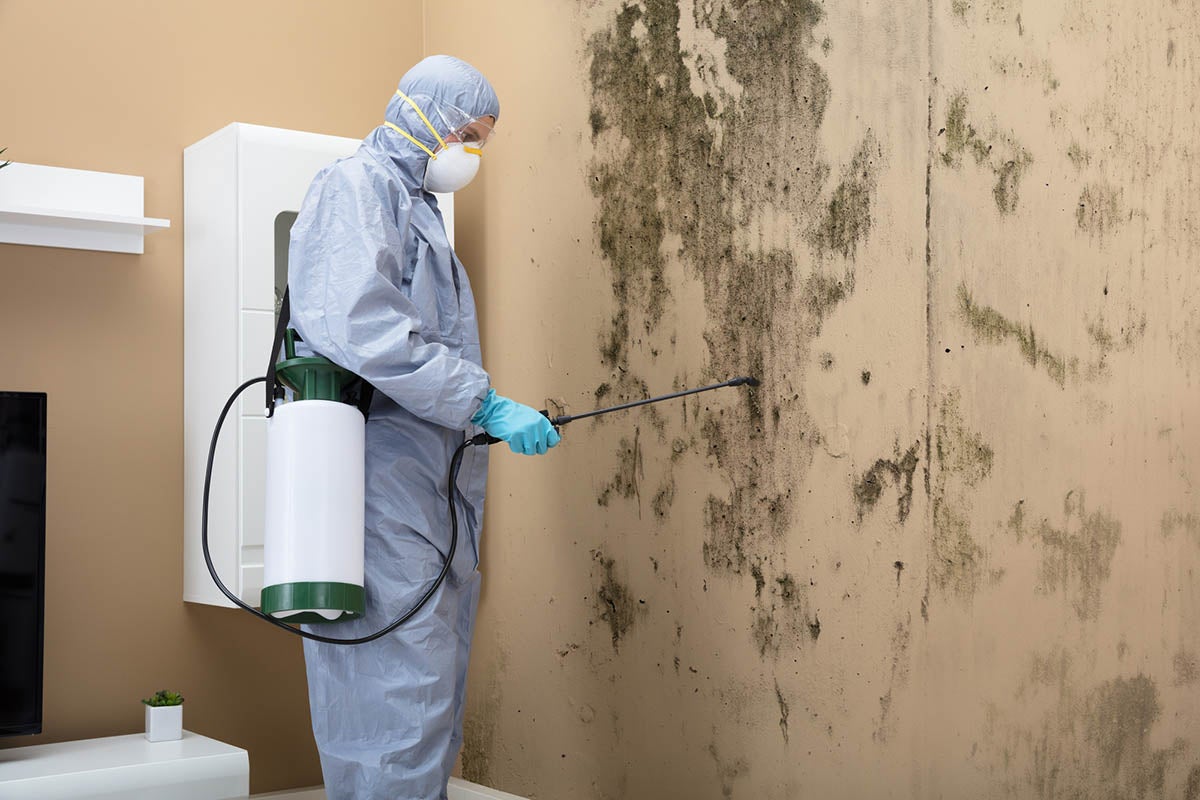Assistance on What to Do After Mold Remediation
Assistance on What to Do After Mold Remediation
Blog Article
Effective Article Mold Remediation Solutions for Your Home
Mold growth in homes can be a relentless issue, commonly needing an organized method for efficient post-remediation solutions. From understanding the aspects that add to mold advancement to carrying out correct cleaning strategies and moisture control measures, the process can be intricate yet vital for preserving a healthy and balanced living atmosphere. Furthermore, exploring all-natural remediation options and developing a routine for ongoing maintenance are vital elements of a comprehensive mold and mildew remediation technique. As house owners strive to address mold issues, finding one of the most effective remedies comes to be vital for the well-being of their families.
Understanding Mold And Mildew Development Elements
Mold and mildew development is affected by a range of variables that are crucial to comprehend in order to properly address and stop its proliferation. Recognizing these variables is necessary in executing effective mold and mildew remediation techniques. The primary variable adding to mold and mildew growth is dampness. Mold spores call for dampness to germinate and prosper, making damp or moist atmospheres highly at risk to mold and mildew problems. Poor ventilation can also bring about moisture buildup, creating an excellent breeding ground for mold and mildew.

Additionally, airflow and light exposure can influence mold and mildew growth. Areas that lack appropriate air flow and all-natural light are extra prone to mold advancement. By dealing with these aspects comprehensively, people can effectively reduce mold development and guard their living atmospheres.
Appropriate Mold Cleaning Strategies
Utilizing effective cleansing approaches is crucial in stopping the reoccurrence and attending to of mold contamination in interior atmospheres. When handling mold, it is important to focus on safety by using protective equipment such as gloves, masks, and safety glasses. The very first step in proper mold cleansing is to include the afflicted location to avoid the spread of spores to uncontaminated locations. This can be achieved by sealing the room and making use of air scrubbers or negative air machines to keep air top quality.

Applying Dampness Control Steps
To effectively avoid mold growth and contamination in indoor settings, applying dampness control measures is extremely important. Furthermore, making certain proper air flow in locations vulnerable to moisture build-up, such as kitchen areas and shower rooms, can assist decrease the risk of mold and mildew growth. By carefully applying these dampness control actions, homeowners can efficiently lower the chance of mold and mildew recontamination and keep a healthy indoor atmosphere.
Making Use Of Natural Removal Solutions
After efficiently applying wetness control steps to protect against mold and mildew growth in interior environments, home see this site owners can currently check out the effectiveness of all-natural remediation services in keeping a healthy living room. All-natural remediation solutions make use of eco pleasant approaches to battle mold and mildew and mildew, making them a prominent option for those looking for non-toxic options. By incorporating these natural removal solutions right into their cleansing regimens, property owners can successfully combat mold development while advertising a healthier interior setting for themselves and their family members.

Maintaining a Mold-Free Environment
Regularly examining locations prone to mold and mildew growth, such as bathrooms, kitchens, basements, and attics, is essential. Correct ventilation in locations with high humidity levels is also essential to protecting against mold and mildew development.
Furthermore, preserving sanitation in the home is vital for mold prevention. Frequently cleansing and dusting surface areas, rugs, and furniture can assist remove mold spores prior to they have an opportunity to resolve and increase. Using mold-resistant products for building and construction products and home furnishings can further aid in developing a mold-free setting. Keeping interior plants in check and making certain correct drainage in outside landscaping can reduce wetness build-up, reducing the chance of mold and mildew invasions. By following these proactive upkeep techniques, homeowners can efficiently promote remove mold stains from linen a mold-free living area.
Conclusion
Finally, it is essential to resolve mold development aspects, utilize correct cleansing methods, implement wetness control actions, use natural removal remedies, and keep a mold-free atmosphere in order to efficiently manage message mold and mildew remediation in your house - what to do after mold remediation. By complying with these approaches, you can stop mold and mildew from recurring and ensure a healthy living atmosphere for you and your family
The primary element adding to mold and mildew development is moisture. Mold and mildew spores call for dampness to flourish and sprout, making damp or wet settings very prone to mold invasions.To properly prevent mold and mildew development and contamination in indoor settings, carrying out dampness control actions is extremely important. In addition, making certain proper air flow in areas prone to moisture buildup, such as cooking areas and washrooms, can aid reduce the risk of mold development.After efficiently applying dampness control procedures to avoid mold development in indoor atmospheres, home owners can now explore the effectiveness of all-natural remediation solutions in preserving a healthy and balanced living area.
Report this page